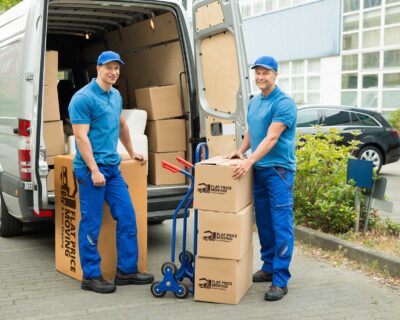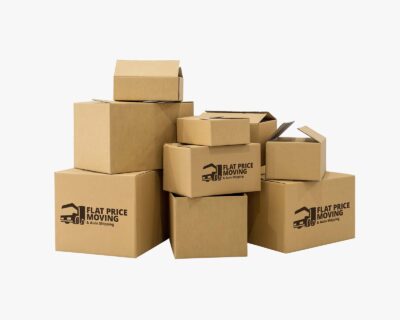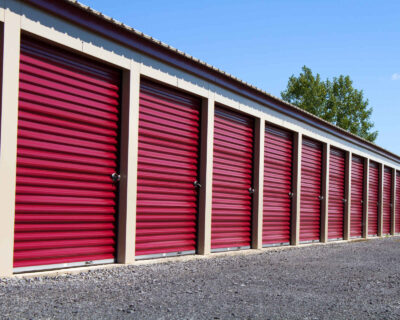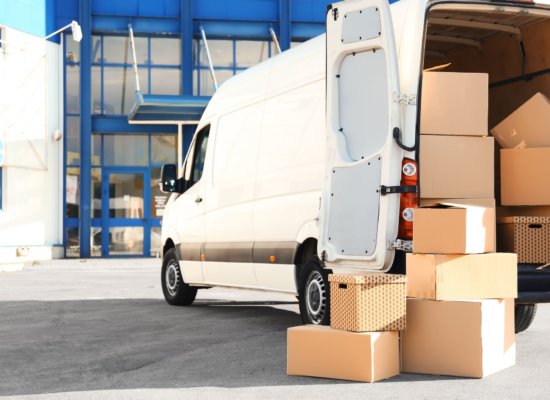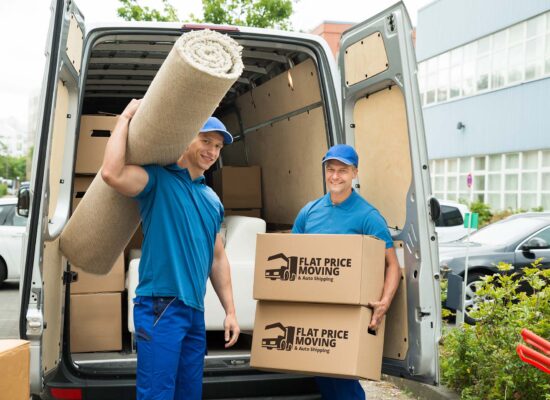How to Unpack After Moving – Best Tips and Tricks
The average American household needs around 100 boxes when long-distance relocating. Of course, it all depends on how many rooms there are and the volume of your belongings. That’s why knowing how to unpack after moving is an essential step in the whole process. If you can do something to make the relocation less stressful, then you most certainly should do it. The unpacking process is one of the things that will help you adjust faster.
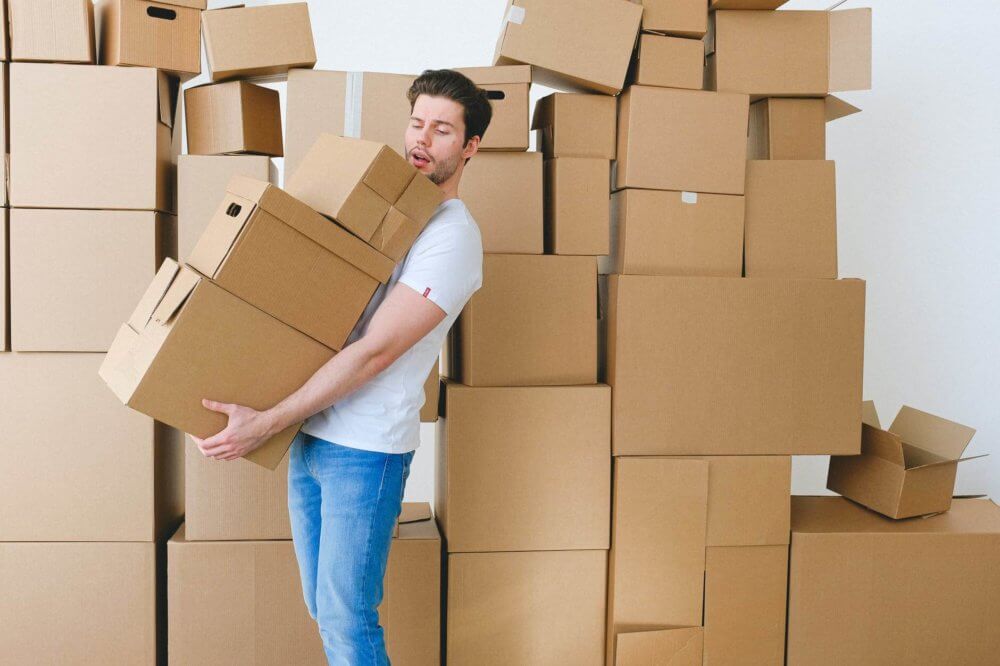
Relocating to a future place is a challenging event in people’s life. With saying goodbye to friends before the move and then meeting new neighbors, the whole relocation process can be pretty stressful. However, you need to do many things to make the move a success. One of the things to do after the move is probably the most tedious task – the unboxing. You should have that whole process planned because it takes around 180 days for the average American to unpack all the boxes after the long-distance movers leave.
How Long Should It Take to Unpack After Moving – Think Ahead and Pack Smart
You can move for many reasons, and no matter how exciting it can be because you got an amazing work offer and decided to move for a job, you still need to deal with the packing and what comes afterward – emptying all the boxes and making the new place home. Luckily, there are some tips and tricks that will help you do it like a pro, and you’ll be done in no time. The golden rule is to start organizing your move months before you set the relocation day with long-distance movers and avoid the last-minute move.
Decluttering Before the Move Will Make the Whole Process Less Stressful
One of the best steps to help you with packing your items is decluttering. Getting rid of things you don’t use anymore is something you should do, especially if you’ve been watching clutter in your home for quite some time. Once you gathered all the packing materials you’ll use for this process, start with separating all the stuff you don’t want in your new home.
Like everything else in a cross-country relocation, this will take time, too. So, begin to declutter room by room and put all the unwanted and unneeded items in a box. Not only will it mean a lot if you’re relocating on a budget, but it will save you a lot of time once you arrive at your future destination.
Toss or Donate What You Don’t Use Anymore and Have No Worry on Your Mind
If you don’t know what to do with all that stuff you won’t bring with you, don’t despair. There are ways to resolve this problem. Start by creating the following categories:
- Donate – clothes, electronics, and everything that can be used again and it’s in good condition you can donate to charity. Check the website Goodwill or visit local charity centers.
- Toss – items that can’t be reused should be tossed. There’s no point in keeping them any longer and making clutter in your future home.
- Storage – if using long-distance moving services, check with the chosen company if it provides storage facilities where you can keep the stuff you still don’t know what to do with.
Check With the Long-Distance Moving Company What the Professional Crew Can’t Transport
Once you decide it’s the best moment to move, you should prepare some questions to ask cross-country movers. Before you begin to think, “how do I unpack a move,” there is stuff you can’t move. Knowing what those things are will ease the whole process that comes after you settle in. No matter if you’re DIY-ing because you’re looking for the cheapest way to move out, or you’ll let the professionals do it with their packing services, still check what you shouldn’t pack for this process:
- Hazardous items,
- Perishable food,
- Plants and pets.
So, hazardous things and perishable food are out of the picture, but if you’re relocating with pets and plants, you should keep them next to you. If you have never moved with your dog before, watch the video below for some advice on how to achieve a stress-free move.
How to Unpack After a Move – Clean New Home and Have a Fresh Start
We all know why relocating is so stressful. You have to deal with the unknown surroundings and everything that comes with it. However, there are some things to do that will make you feel much better if you’re wondering how to unpack after a move. The first step is to inspect and clean your future house. That way, your place will sparkle, and you’ll feel more comfortable and rest, no matter how tired you are.
It sounds strange, but once you finish with the cleaning part, you’ll be ready to unpack and prepare yourself and the house for the next chapter – adjusting.
Unpacking Tips – Place the Boxes in the Right Room
One of the best unpacking tips you need to follow is following the labels on each box. After you estimated the value of household goods, you probably considered all the relocation hacks and started wrapping up your belongings into labeled boxes. So, for example, if there’s a box labeled “kitchen,” you’ll know exactly where it goes and what’s inside since you’ll have everything written on the package. The same goes for each room, and you’ll see how everything will be more organized, and it will help you make it through the day without any additional difficulties.
Inspect the Garage Before Car Shipping Company Safely Transport Your Vehicle
If you’re considering shipping your car across the country, then you probably found a reliable auto transport company that will safely transport your precious vehicle. However, you have to think about the place where your car will be once you move. In that case, relocating your garage is something you have to consider, and pay attention to what will be packed from it. Be sure you get all the right supplies and dig in.
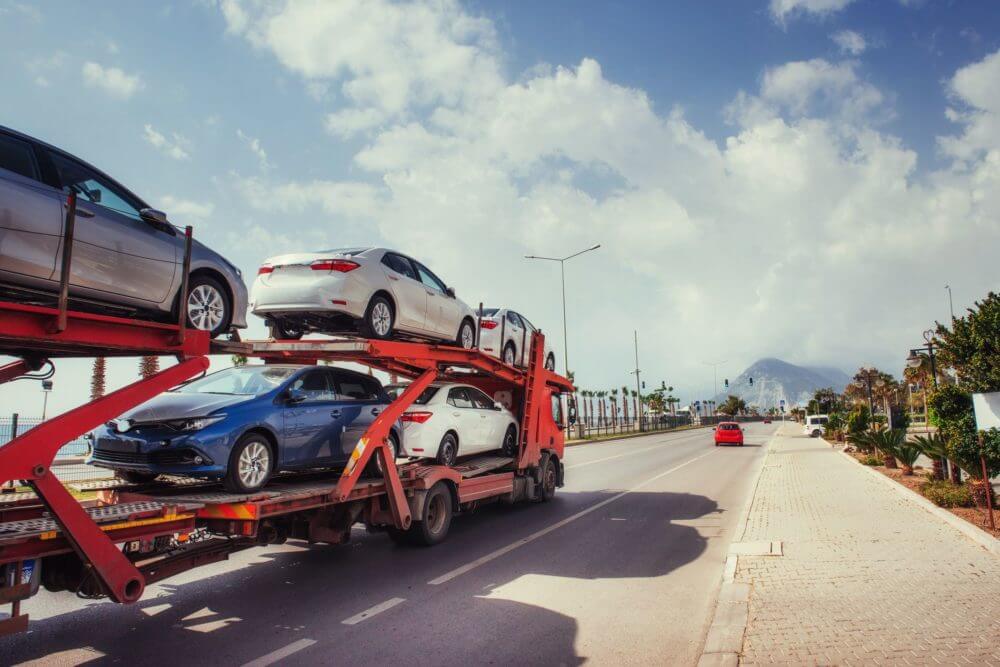
Where Do I Start Unpacking After Moving? Let the Professionals Do Their Job First
If you’ve never moved before or just don’t know the easiest way to pack, then you should get prepared and arm yourself with patience. However, the good thing about using the cross-country moving services is that the professional movers will disassemble and assemble the furniture and other bulky stuff once you arrive at your destination. So, when hiring movers, be sure you don’t have to give up on your vintage pieces or sentimental stuff you got from your grandma.
You Just Have to Say Where Will the Furniture Go and the Rest Is Up to Reliable Cross-Country Movers
You can create a plan that will keep you coordinated on the relocation day, and don’t lose any of your precious free moments by wondering what things people forget when relocating. When the professional crew arrives at your future destination, and you’re finished with the cleaning, you should first deal with your bigger pieces since the movers will assemble them and put them wherever you want.

Useful Tips for Unpacking After a Move – One Room a Day
Making the whole process of unpacking after the move smooth is something you need to think about right after you decide where you will live. The essential thing to know is that everyone’s relocation is different, but one thing is the same: if you organize the whole process in advance, you’ll have as efficient a move as possible. Most of us don’t like opening the boxes we packed so carefully and efficiently, but it’s something that you can’t avoid. The trick is not to postpone it. So, create a good system that will ease and straighten this process. Let’s look at how to organize.
How Do I Unpack Fast After Moving – The Best Is to Start With the Essential Things
Before you start randomly opening each box, ensure you have the inventory list you created before the move. It will help you track your belongings and how many packages you have to deal with per day.
The first box you should start with is the one with your essentials. It is the box that traveled with you or should be unloaded first if transported by truck. These essentials are things you need to make through those first days after the move. Here you should pack some changing clothes, towels, medications, toothbrushes, and toothpaste.
Moving Services
Whether you are moving from New York to Los Angeles or from San Francisco to Chicago, we can help you.
Read morePacking Services
Our moving teams are trained to pack your belongings in the most efficient manner possible.
Read moreStorage Service
Knowing what kind of surprises cross country move may hold, we offer 30 day free storage for belongings at the origin state.
Read moreKitchen Could Be Most Tedious Room, but You’ll Use It First
After you’re done with the essentials, continue with the kitchen because it’s one of the rooms you’ll use first. Here all the labeling you did before will come to light and be the most helpful thing, even though at first it seemed too much. So, with good advice on how to pack a kitchen with the right labeling, you’ll be able to put each item in the right place and save time and nerves. If you don’t have enough free moments to do everything by order, then unbox the essential stuff, and you’ll deal with other less important stuff at some other time.
Then Deal With Bathroom
The next one should be the bathroom, and how much stuff you have to put in there will dictate how much time you’ll need. But, the essential thing when it comes to unboxing the bathroom stuff is to have the water turned on. Once that is checked on your list, you’ll already have the bathroom ready to use. So, if you can’t do the whole unpacking right away, put in some basics such as towels, medications, and body and face care products, and you’ll be good to go for the first period after the move.

How to Unpack After Moving – Embrace the Big Change and Plan How Will Your New Home Look Like
Even though the relocation is an extremely stressful process, it will bring you many benefits and opportunities – if not right away, then in the future. And this is something you should concentrate on when the whole process is over, and you finally get some sleep and rest. Once the main unpacking is done, you can get your house decorated as you want – hang that one picture you couldn’t hang in the old house, for example. So, enjoy the change as much as you can because once the unpacking is successfully done, the new life will finally kick in to the fullest.
FAQ
Where Do I Begin When Unpacking After a Move?
Begin by unpacking the essentials first: Start with the items that you use daily, such as toiletries, clothing, bedding, and kitchen essentials like plates, utensils, and a few pots and pans.
What Is the Best Way to Organize My Unpacking Process?
Organize your unpacking process: Create a plan of attack by prioritizing which rooms you want to unpack first. You can also create a checklist to ensure that you don’t miss anything important. Have your checklist always by your side and as soon as you complete a task cross it off the list.
How Long Should It Take To Unpack After a Move?
The amount of time it takes to unpack after a move can vary greatly depending on the amount of stuff you have, the size of your new home, and how organized you are during the packing and moving process. On average, it can take several days to a week or more to fully unpack after a move.
What Are the Essential Items to Unpack First?
After a long day of moving, you’ll want to have a comfortable place to sleep. Unpack your bedding and make your bed as soon as possible. Also, you’ll need your toothbrush, toothpaste, shampoo, soap, and other basic toiletries to freshen up after a long day of moving. Don’t forget to unpack your clothes and put them away.
Should I Unpack Room by Room or by Item Category?
Decide whether to unpack by room or item category. Unpacking by room may help you feel more organized, but unpacking by item category can help you streamline the process by handling similar items together.
What Are the Best Unpacking Tips for Reducing Clutter?
Before you start unpacking, take some time to sort through your belongings and get rid of anything that you no longer need or want. Set aside items to donate, sell, or discard. Use the “one in, one out” rule: For every new item you unpack, get rid of an old item. This can help you keep clutter under control and prevent it from building up again.
How Do I Dispose of Unwanted Items While Unpacking?
If you have items you no longer need, consider donating them to a local charity or selling them online. If they’re not in good condition, dispose of them properly.
How Can I Involve Family Members in the Unpacking Process?
Encourage family members to help with the unpacking process. You can assign them specific tasks or ask them to unpack their own rooms. One of the ways you can make unpacking fun for everyone is by throwing a packing party and ordering food for everyone involved.
How Do I Deal With Unpacking Fragile or Valuable Items?
Unpacking fragile or valuable items requires patience and careful attention. Avoid rushing the process and instead, take your time to ensure that everything is unpacked and stored safely. If you still have the packing materials from your move, use them to repack fragile or valuable items before unpacking. If not, use bubble wrap, packing peanuts, or other protective materials to cushion the items during transit.
What Are the Best Ways to Store Items While Unpacking?
Use storage containers. They can help keep items organized and make it easier to move them from one room to another. Use clear containers so you can easily see what’s inside. Labeling your storage containers can help you find items more easily later on. Use descriptive labels that make it clear what’s inside each container.
How Do I Handle Unpacking Large Furniture and Appliances?
Before you start unpacking, make sure you have a plan for where each item will go. Measure the space where each item will be placed to ensure that it will fit properly. When lifting heavy items, always lift with your legs, not your back. Use a dolly or hand truck to move heavy items if possible. Don’t try to move large items alone if they’re too heavy or awkward to handle. Enlist the help of friends or family members, or consider hiring long-distance movers.
What Are Some Helpful Tools or Equipment for Unpacking?
Here are some helpful tools and equipment:
- Box cutter or scissors: You’ll need a tool to cut through packing tape and boxes. A box cutter or a pair of scissors will work well.
- Moving blankets: Moving blankets can be used to protect fragile items from damage during transport or when stacking boxes.
- Dolly or hand truck: A dolly or hand truck can be used to move heavy items like furniture and appliances.
- Furniture sliders: Furniture sliders can help move heavy furniture without damaging floors or carpets.
How Can I Make the Unpacking Process More Efficient?
Before you start unpacking, create a plan for where everything will go. This will help you avoid moving items around unnecessarily and can make the process more efficient. Focus on one room at a time, starting with the most essential items. This will help you avoid feeling overwhelmed and can help you stay organized. Keep essential items like your phone charger, toiletries, and a change of clothes in a separate bag or box.
What Should I Do if I Can’t Finish Unpacking in One Day?
It’s not uncommon to be unable to finish unpacking in one day. If you’re unable to finish unpacking in one day, prioritize the most essential items and focus on unpacking those first. You can then continue unpacking in stages, focusing on one room or category of items at a time. Don’t feel like you need to rush through the process – take breaks as needed to avoid becoming overwhelmed.
How Can I Celebrate and Reward Myself After Completing the Unpacking Process?
Completing the unpacking process can be a big accomplishment, and it’s important to take some time to celebrate and reward yourself. Here are some ideas:
- Treat yourself to a nice meal at a restaurant or cook a special meal at home.
- Relax and unwind with a good book, movie, or TV show.
- Plan a fun outing with friends or family.
- Get a massage or spa treatment to help you relax and rejuvenate.
